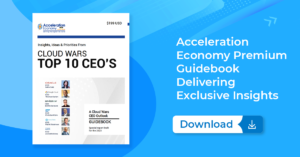
I just learned (thanks, Wikipedia!) that insurance dates back to the Code of Hammurabi, 4,000 years ago! And even then, insurers needed to record and manage information. Insurance “policies” back then were chiseled into stone tablets. Imagine how hard it was to update a policy, or to understand your book’s total exposure!
Having spent decades in financial services, I’m here to tell you that automated — often mainframe-based — insurance systems were almost as hard to update. And running financial analyses might have been easier from stone tablets than those old systems.
The 21st-century insurance industry runs on vast amounts of data, collected from many sources, and used in a variety of ways — from underwriting to premium collection to answering questions from agents and policyholders. Even today, insurers all too often use systems designed long ago to fit into the constraints of expensive yet limited hardware. It’s common to encounter:
- Inflexible systems, where even simple changes require specialized and expensive IT resources
- Siloed data, so reports are often inconsistent, and data corrections are multi-step processes
- Backward-looking reports, rather than flexible what-if capabilities
- Challenging, outmoded user experiences constrained by the limitations of desktop devices
In today’s Acceleration Economy, insurance firms compete on speed, quality, cost, and service — and customers aren’t looking to “choose three,” they expect all four!
How does a firm realize such seemingly contradictory goals? By implementing a cloud-based platform that delivers a modern SaaS experience including everything from a powerful, integrated data model to exceptional employee and customer experiences.
First, let’s address the importance of data to insurance organizations. Having a single, integrated data model that supports claims and policy data integrated with financial and people data ensures real-time access to data so that your people can quickly spot opportunities, uncover risk, and take action.
What’s the Workday difference that unlocks this flexibility and power? Workday connects enterprise applications through its single data model blending finance and HR data with policy and claims data, enabling swift, confident, and accurate decision-making.
Workday’s unique approach weaves artificial intelligence (AI) and machine learning (ML) into the core platform to generate recommendations; a good example of that is conducting anomaly detection on journal entries. Workday functionality combs through accounting data, looks for anomalies, surfaces them, and recommends corrective actions. This eliminates lots of manual investigations and makes month- or quarter-end closes a breeze.
Another critical benefit to a modern cloud platform is that you create a great user experience tailored to the needs of each class of user: employee, partner, and customer. In today’s tight labor market, employees appreciate being productive at work rather than being saddled with mundane tasks like entering data over and over. Plus, technical employees are highly attuned to the systems their company uses; they don’t want to be working with aging systems that are out-of-step with current labor market trends.
Partners also appreciate efficiency when dealing with your insurance firm, so they’re more likely to favor a partner that offers a great UX.
Today’s customer, of course, expects insurance firms to deliver fast, flexible, and customized experiences when transacting business. While insurance firms in the past hesitated to embrace modern customer experience for fear it would detract from their white-glove service standards, times have changed and customers now expect tech-supported experiences that further enhance that experience. This includes text responses or self-serve functionality for those who prefer it.
So a modern platform is a win-win-win for all your key stakeholders!
If you’re in insurance and are facing system upgrade decisions — and many of you are — it’s time to consider a modern cloud platform, and Workday is well-suited to the needs of today’s insurance customers.
Workday co-developed its software with customers, ensuring tight alignment between customer needs and product functionality. That’s a big reason Workday has more than 1,400 customers in Financial Services, including over 350 insurance organizations. Workday was also recognized as a Leader in the 2022 Gartner Magic Quadrant for Cloud ERP for Service-Centric Enterprises. It’s also been a Leader in the Gartner Magic Quadrant for Cloud Core Financial Management suites for five years running. As a cloud-based platform, the Workday software ensures customers have the flexibility and scalability to drive growth while ensuring Workday’s apps fit into their preferred IT architecture.
Here’s a word of warning: Not all “cloud” platforms are created equal. Many older products were designed as on-premise products and later moved to the cloud. These products require expensive IT support for day-to-day operations, run with siloed data, and are very difficult to change (just like the old mainframe products mentioned above). Avoid these products at all costs!
But even systems that were designed to run in the cloud, especially first-generation cloud systems, have significant shortcomings when compared to a modern cloud platform like Workday. Maybe their security model is lacking, or their data is siloed, or they require “customization” by programmers rather than “configuration” by business/process SMEs. So, watch out for “cloud-washing” sales pitches when evaluating modern platforms.











